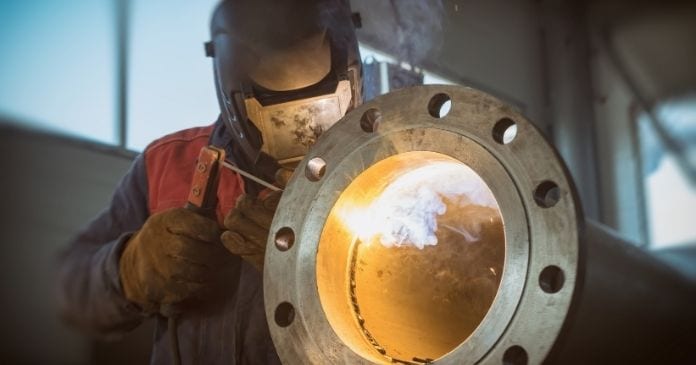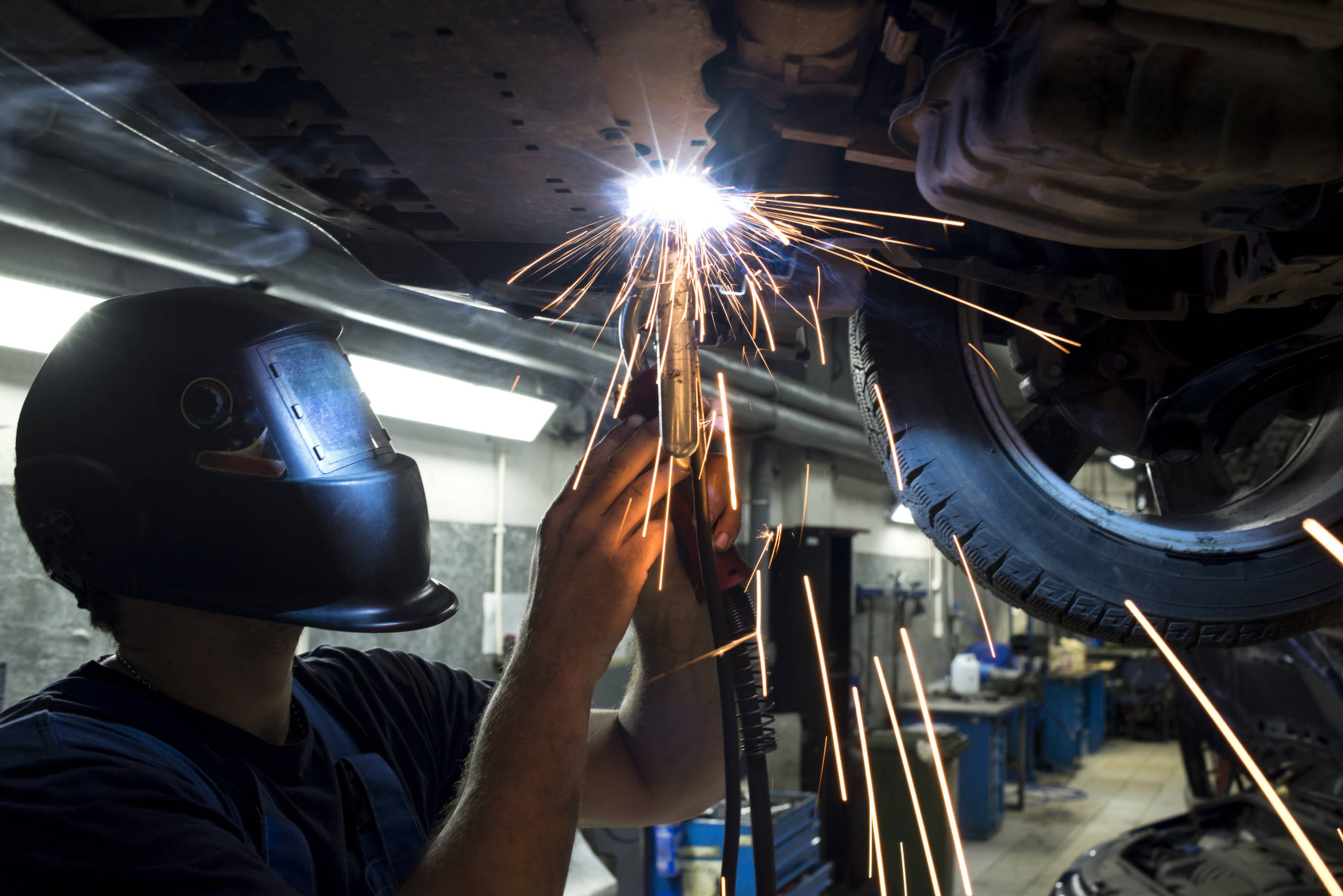Typical Welding Repair Issues and Exactly How to Address Them Successfully
Welding repair work typically experience a series of problems that can threaten the honesty of the last product. Usual issues include insufficient penetration, porosity, and imbalance, to name a few. Each flaw presents unique difficulties that need details approaches for resolution. Comprehending these issues is crucial for welders intending to improve their end results and skills. This conversation will certainly check out these typical welding fixing concerns and reliable techniques to address them.
Insufficient Penetration
Poor infiltration takes place when the weld steel fails to fully fuse with the base material, resulting in weak joints and potential architectural failings. This issue often comes from not enough warm input, wrong electrode angle, or improper welding rate. Welders may encounter insufficient infiltration due to a mistake of the needed parameters for a details product thickness or type. Furthermore, contamination on the base material's surface can prevent reliable bonding, exacerbating the issue. To attend to inadequate penetration, welders need to assure ideal settings on their tools and preserve a tidy job surface. Normal inspection of welds is advised to identify any kind of deficiencies early, enabling timely adjustments and the prevention of jeopardized architectural stability in welded settings up.
Porosity
Porosity is a common defect in welded joints that materializes as little gas bubbles caught within the weld steel. This problem can compromise the honesty of the weld, bring about minimized stamina and potential failing under tension. Montana Mobile Welding and Repair Belgrade Fabrication. Porosity typically develops from contamination, moisture, or incorrect welding strategies, which allow gases to get away into the liquified weld swimming pool. To attend to porosity, welders need to assure appropriate surface preparation, maintain a clean functioning environment, and utilize appropriate welding specifications. Furthermore, selecting the best filler material and shielding gas can minimize gas entrapment. Regular evaluation and screening of welds can assist determine porosity early, guaranteeing timely rehabilitative activities are taken, thereby protecting the quality and integrity of the bonded framework
Imbalance
Imbalance in welding can occur from numerous variables, including improper setup and thermal development. Comprehending the origin is vital for efficient resolution. Several improvement methods are available to realign parts and assure structural stability.
Sources of Imbalance
Welding imbalance typically originates from a range of underlying problems that can endanger architectural stability. One primary cause is incorrect fit-up of elements before welding, which can lead to spaces and uneven surface areas. Variants in thermal expansion during the welding procedure can also lead to distortion, specifically if the products being signed up with have different coefficients of growth. Additionally, inadequate fixturing and clamping may stop working to hold parts securely in location, resulting in motion throughout welding. Poorly maintained tools, consisting of welding machines and tools, might introduce disparities in the weld bead, more adding to imbalance. Driver mistake, stemming from inadequate training or experience, can likewise play a substantial role in producing misaligned welds.

Adjustment Methods Offered
Resolving misalignment successfully needs a combination of restorative strategies customized to the details concerns handy. One common approach is making use of components or jigs to hold elements in the appropriate placement throughout welding, ensuring regular placement. In addition, pre-heating the products can help lower distortion and improve fit-up. For substantial misalignment, mechanical realignment techniques, such as making use of hydraulic jacks or clamps, can be utilized to fix the placement before welding. Post-weld heat treatment might likewise be required to relieve stresses brought on by misalignment. Finally, mindful inspection and modification during the configuration phase can protect against imbalance problems from becoming substantial troubles, promoting a smoother welding procedure and enhancing overall architectural stability.
Distortion
Distortion is an usual difficulty in welding that can develop from different factors, consisting of unequal heating and air conditioning. Understanding the root causes of distortion is crucial for carrying out efficient avoidance methods. Resolving this problem not only enhances architectural stability but likewise boosts the overall top quality of the weld.
Reasons for Distortion
When subjected to the intense warm of welding, products frequently go through changes that can result in distortion. This phenomenon mostly develops from thermal expansion and tightening during the welding process. As the weld location warms up, the material increases; upon air conditioning, it gets, which can produce inner stress and anxieties. In addition, uneven heating across a work surface can exacerbate these stress and anxieties, causing warping or flexing. The sort of product also plays a considerable duty; steels with varying thermal conductivity and coefficients of expansion might react in different ways, bring about unforeseeable distortions. In addition, poor joint design and poor fixturing can add to misalignment throughout welding, increasing the chance of distortion. Understanding these causes is essential for reliable welding repair and avoidance approaches.
Avoidance Techniques
Efficient avoidance strategies for distortion throughout welding emphasis on controlling navigate to these guys warmth input and making certain appropriate joint style. Keeping a constant warm input aids to lessen thermal growth and tightening, which can result in distortion. Using techniques such as pre-heating the work surface can likewise decrease the temperature level gradient, advertising uniform heating. In addition, choosing proper joint styles, such as T-joints or lap joints, can boost stability and lower tension focus. Implementing correct fixturing to secure the workpieces in location additionally aids in maintaining positioning during the welding process. Staggered welding sequences can disperse heat much more evenly, stopping local distortion. By using these techniques, welders can considerably reduce the probability of distortion and enhance the general high quality of their welds.
Fracturing
Fracturing is an usual problem come across in welding repair work, frequently resulting from different elements such as improper air conditioning rates, product choice, or inadequate joint preparation. The occurrence of fractures can significantly jeopardize the honesty of the weld, causing prospective failings during procedure. To resolve this problem, welders have to first evaluate the source, guaranteeing that materials work and properly selected for the details application. Furthermore, regulating the cooling price during the welding procedure is important; fast cooling can cause stress and anxiety and bring about fracturing. Appropriate joint style and preparation also add to decreasing the risk. Implementing these methods can boost weld top quality and longevity, inevitably lowering the possibility of fracturing in ended up weldments.

Insufficient Fusion
A considerable problem in welding fixings is insufficient blend, which occurs when the weld metal does not adequately bond with the base product or previous weld passes - Welding. This defect can lead to weak points in the joint, potentially endangering the integrity of the bonded framework. Aspects contributing to insufficient combination include not enough warm input, incorrect welding technique, and contamination of the surface areas being joined. To address this concern properly, welders must assure proper pre-weld cleansing and surface area preparation, as well as change their welding criteria to achieve adequate infiltration and blend. Regular inspection during the welding procedure can also aid identify insufficient blend early, permitting for prompt rehabilitative procedures to improve the total high quality of the weld
Overheating
While welding repair work can boost architectural integrity, overheating offers a substantial difficulty that can result in check it out product deterioration. Excessive heat during welding can change the mechanical homes of metals, resulting in minimized strength, raised brittleness, and bending. This sensation is especially critical in high-stress applications where structural reliability is vital. Recognizing getting too hot can include aesthetic assessments for discoloration or distortion, along with keeping an eye on temperature level throughout the welding procedure. To alleviate the threats related to overheating, welders need to employ proper strategies, such as regulating heat input, adjusting travel rate, and utilizing ideal filler materials. In addition, carrying out pre- and post-weld heat treatments can assist bring back product properties and improve the overall quality of the fixing, guaranteeing long-term efficiency and safety.
Often Asked Questions
What Are the Typical Signs of a Welding Flaw?

Exactly How Can I Examine My Welds for Top quality?
To test welds for quality, one can make use of visual evaluations, ultrasonic testing, and radiographic techniques. Each strategy ensures architectural stability, identifies issues, and validates adherence to defined criteria, inevitably improving the reliability of the welded joints.
What Safety Preventative Measures Should I Take While Welding?
When welding, one need to focus on safety and security by wearing appropriate individual safety tools, guaranteeing appropriate ventilation, protecting combustible materials away, keeping a tidy office, and knowing surroundings to avoid injuries and mishaps.
Can I Repair a Weld Without Redesigning the Entire Joint?
Repairing a weld without renovating the entire joint is feasible, depending on the damages (Montana Mobile Welding and Repair Fabrication). Techniques such as grinding, including filler product, or l making use of a welding procedure can efficiently address certain flaws while protecting the bordering framework
What Devices Are Vital for Effective Welding Fixes?
Necessary tools for efficient welding repairs consist of a welding maker, wire brush, grinder, safety equipment, clamps, and filler products. Each device plays a crucial role in ensuring high quality and safety during the fixing procedure. Porosity normally arises from contamination, dampness, or improper welding methods, which permit gases to leave into the molten weld swimming pool. Badly conserved tools, consisting of welding devices and devices, might introduce incongruities in the weld bead, additional contributing to misalignment. When subjected to the intense warm of welding, materials frequently undergo changes that can lead to distortion. Fracturing is a typical issue experienced in welding repairs, frequently resulting from different variables such as improper air conditioning prices, material choice, or poor joint preparation. A substantial problem in welding fixings is incomplete fusion, which takes place when the weld metal does not appropriately bond with the base material or previous weld passes.